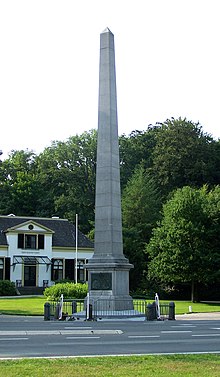
Juliana was Queen of the Netherlands from 1948 until her abdication in 1980.
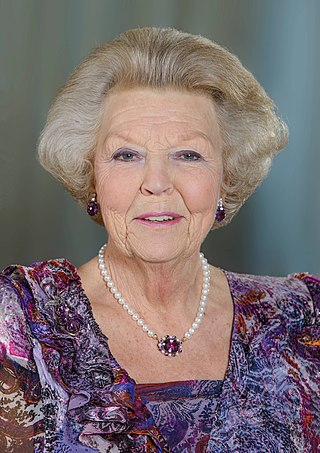
Beatrix is a member of the Dutch royal house who reigned as Queen of the Netherlands from 1980 until her abdication in 2013.

Apeldoorn is a municipality and city in the province of Gelderland in the centre of the Netherlands. The municipality of Apeldoorn, including the of villages of Beekbergen, Loenen, Ugchelen and Hoenderloo, had a population of 165,525 on 1 December 2021. The western half of the municipality lies on the Veluwe ridge, with the eastern half in the IJssel valley.

Wilhelmina was Queen of the Netherlands from 1890 until her abdication in 1948. She reigned for nearly 58 years, making her the longest-reigning monarch in Dutch history, as well as the longest-reigning female monarch outside the United Kingdom. Her reign saw World War I, the Dutch economic crisis of 1933 and World War II.
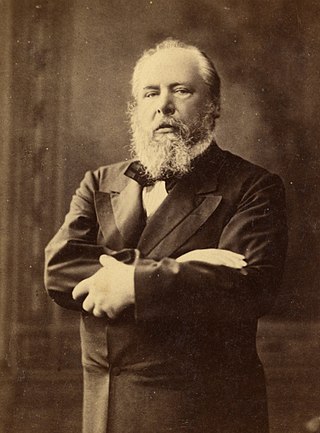
William III was King of the Netherlands and Grand Duke of Luxembourg from 1849 until his death in 1890. He was also the Duke of Limburg from 1849 until the abolition of the duchy in 1866.
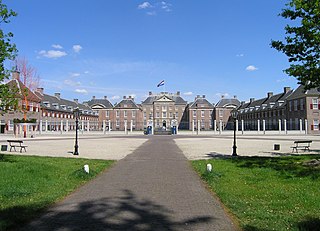
Het Loo Palace is a palace in Apeldoorn, Netherlands, built by the House of Orange-Nassau.

Duke Henry of Mecklenburg-Schwerin was Prince of the Netherlands from 7 February 1901 until his death in 1934 as the husband of Queen Wilhelmina. He remains the longest-serving Dutch consort.

Emma of Waldeck and Pyrmont was Queen of the Netherlands and Grand Duchess of Luxembourg as the wife of King-Grand Duke William III. An immensely popular member of the Dutch Royal Family, Queen Emma served as regent for her daughter, Queen Wilhelmina, during the latter's minority from 1890 until 1898.

Noordeinde Palace is one of three official palaces of the Dutch royal family. Located in the city center of The Hague in the province of South Holland, it has been used as the official workplace of King Willem-Alexander and Queen Maxima since 2013. The Noordeinde Palace and its surrounding palace grounds are property of the Dutch State.

The Obelisco de Buenos Aires is a national historic monument and icon of Buenos Aires. Located in the Plaza de la República in the intersection of avenues Corrientes and 9 de Julio, it was erected in 1936 to commemorate the quadricentennial of the first foundation of the city.

The Indiana State Soldiers and Sailors Monument is a 284 ft 6 in (86.72 m) tall neoclassical monument built on Monument Circle, a circular, brick-paved street that intersects Meridian and Market streets in the center of downtown Indianapolis, Indiana. In the years since its public dedication on May 15, 1902, the monument has become an iconic symbol of Indianapolis, the state capital of Indiana. It was added to the National Register of Historic Places on February 13, 1973, and was included in an expansion of the Indiana World War Memorial Plaza National Historic Landmark District in December 2016. It is located in the Washington Street-Monument Circle Historic District. It is also the largest outdoor memorial and the largest of its kind in Indiana.
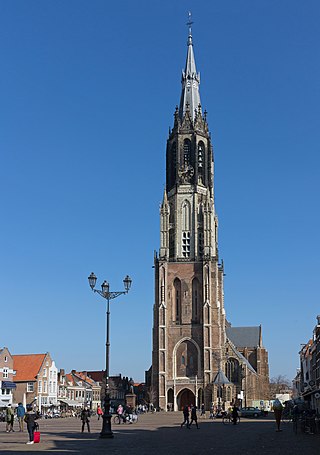
The Nieuwe Kerk is a Protestant church in the city of Delft in the Netherlands. The building is located on Delft Market Square (Markt), opposite to the City Hall. In 1584, William the Silent was entombed here in a mausoleum designed by Hendrick and Pieter de Keyser. Since then, members of the House of Orange-Nassau have been entombed in the royal crypt. The latest members to have been entombed are Queen Juliana and her husband Prince Bernhard in 2004. The private royal family crypt is not open to the public. The church tower, with the most recent recreation of the spire, was designed by Pierre Cuypers and completed in 1872. It is the second highest in the Netherlands, after the Domtoren in Utrecht.
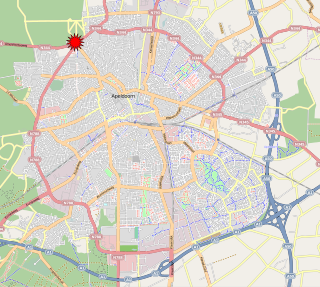
The 2009 attack on the Dutch royal family occurred on 30 April in Apeldoorn, The Netherlands, when a man drove his car at high speed into a parade which included Queen Beatrix, Crown Prince Willem-Alexander and other members of the royal family. The attack took place on the Dutch national holiday of Koninginnedag.
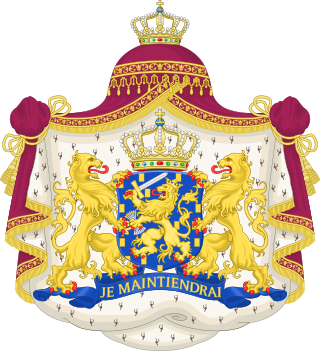
The monarchy of the Netherlands is governed by the country's constitution, roughly a third of which explains the mechanics of succession, accession, and abdication; the roles and duties of the monarch; the formalities of communication between the States General of the Netherlands; and the monarch's role in creating laws.

Koningsdag or King's Day is a national holiday in the Kingdom of the Netherlands. Celebrated on 27 April, the date marks the birth of King Willem-Alexander. When the Dutch monarch is female, the holiday is known as Koninginnedag or Queen's Day and, under Queen Beatrix until 2013, was celebrated on 30 April. She prolonged the tradition that was born under her mother’s reign: Queen Juliana’s birthday was on April 30th.

Lange Voorhout Palace in The Hague was designed in 1760 by the architect Pieter de Swart for Anthony Patras (1718-1764), a deputy to the States General of the Netherlands.

Prince Frederik of Orange-Nassau was a Dutch and Austrian general during the War of the First Coalition. He died in exile of a fever while serving in Padua, Italy.

The Citadel Prins Frederik, also called Fort Prins Frederik, was a fortification built in 1837 by the Dutch in Batavia, in the Dutch East Indies. It was located at Wilhelmina Park, which demolished around 1961 and replaced by the Istiqlal Mosque.

Cleopatra's Needle in London is one of a pair of obelisks, together named Cleopatra's Needles, that were moved from the ruins of the Caesareum of Alexandria, in Egypt, in the 19th century. Inscribed by Thutmose III and later Ramesses II of the Egyptian New Kingdom, the obelisk was moved in 12 BC to Alexandria, where it remained for over 1,800 years.

On 7 October 1946 a Fairey Firefly of the Netherlands Naval Aviation Service crashed next to the Hogere Burgerschool in Apeldoorn, the Netherlands. The burning fuel tank fell into the gym where 27 students were at the time. Of the 27 students, 22 lost their lives, together with the pilot Max Christern. The pilot's mother died of a heart attack later that day, after she arrived at the scene of the crash and was told about his fate.
